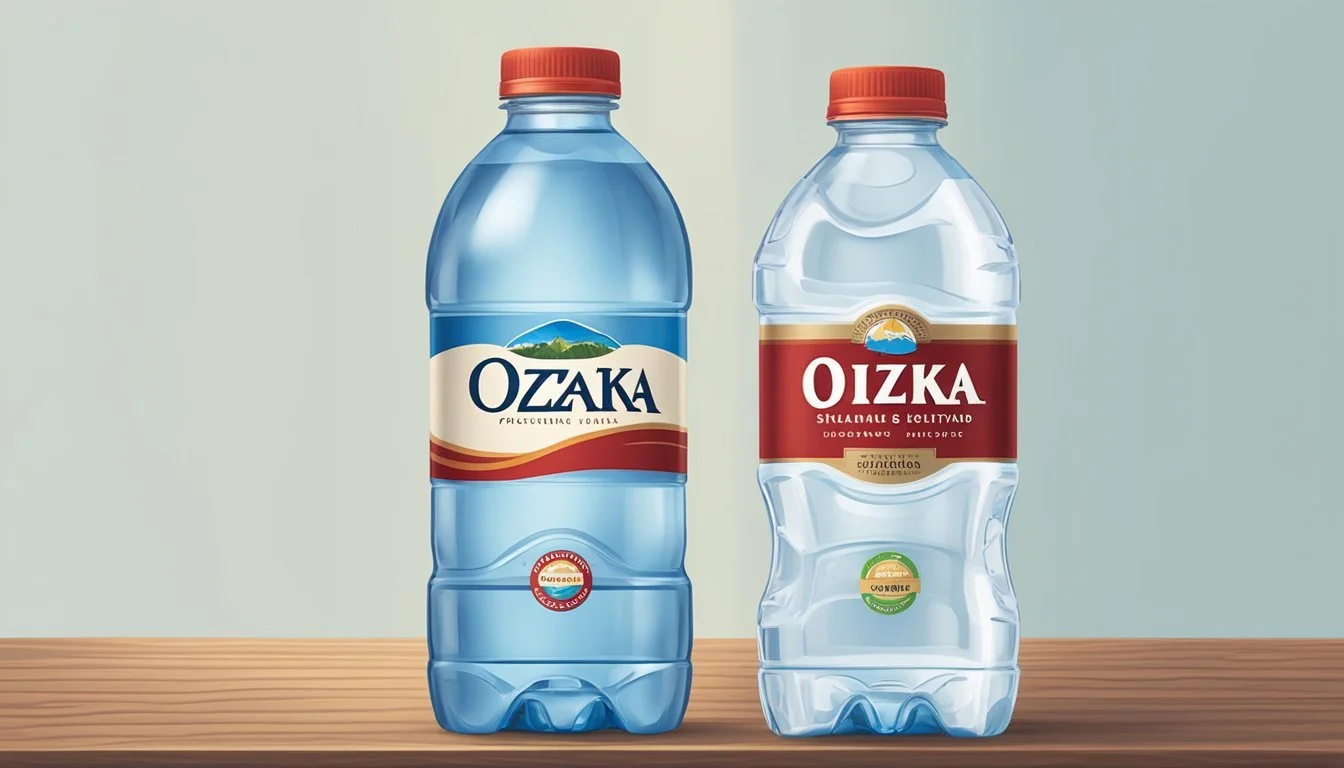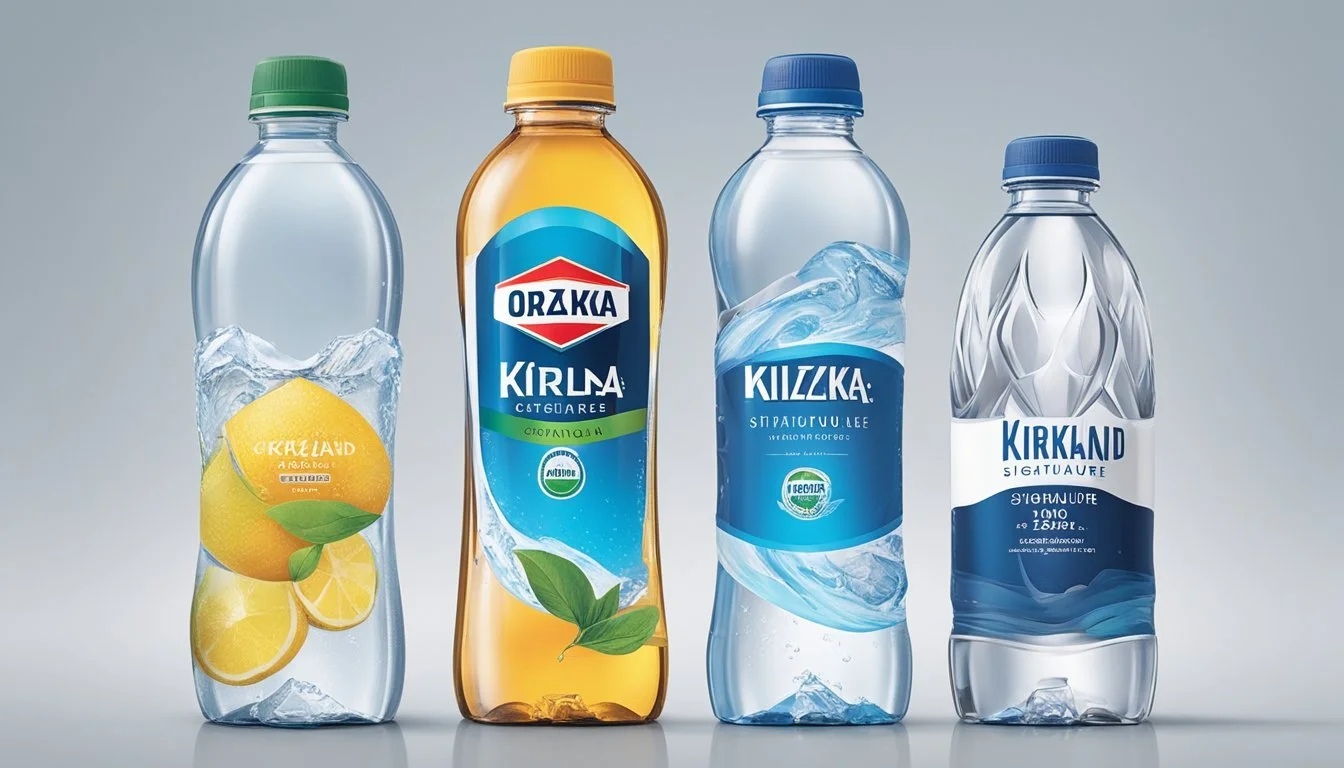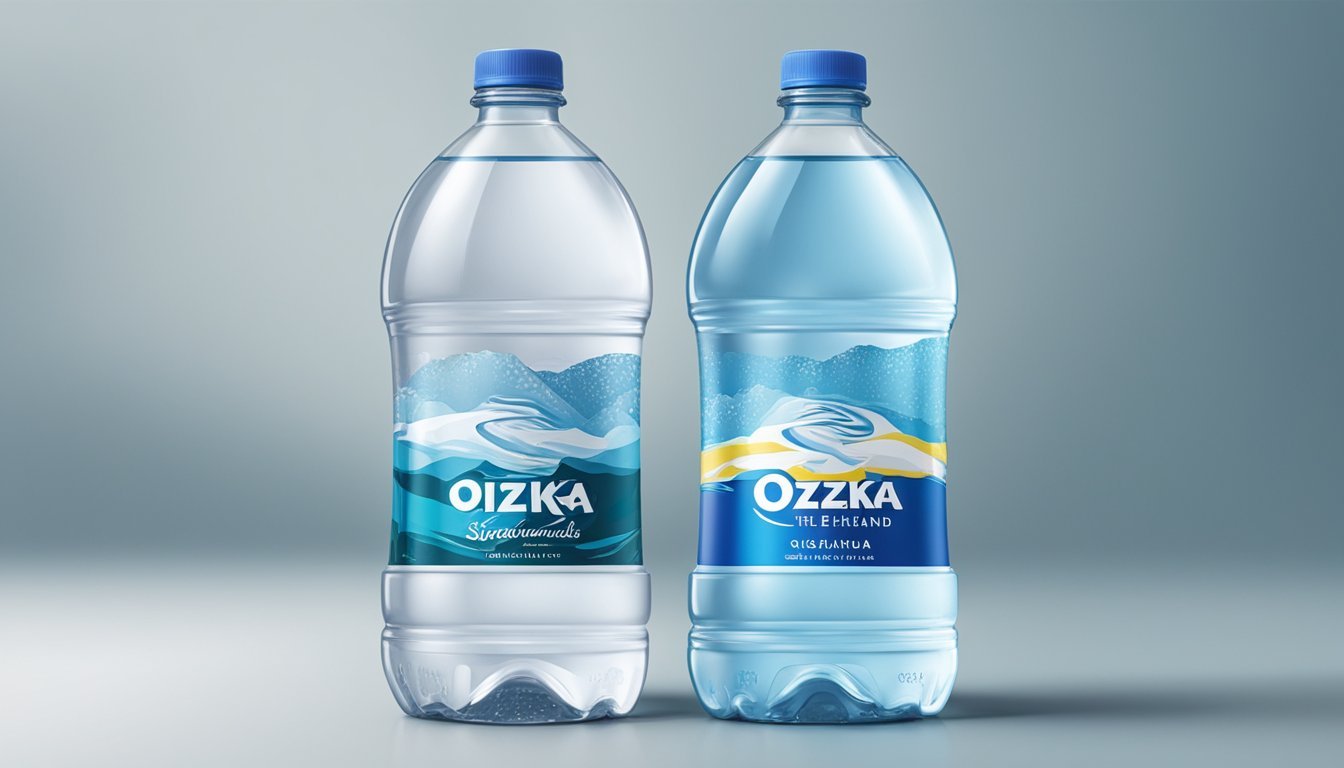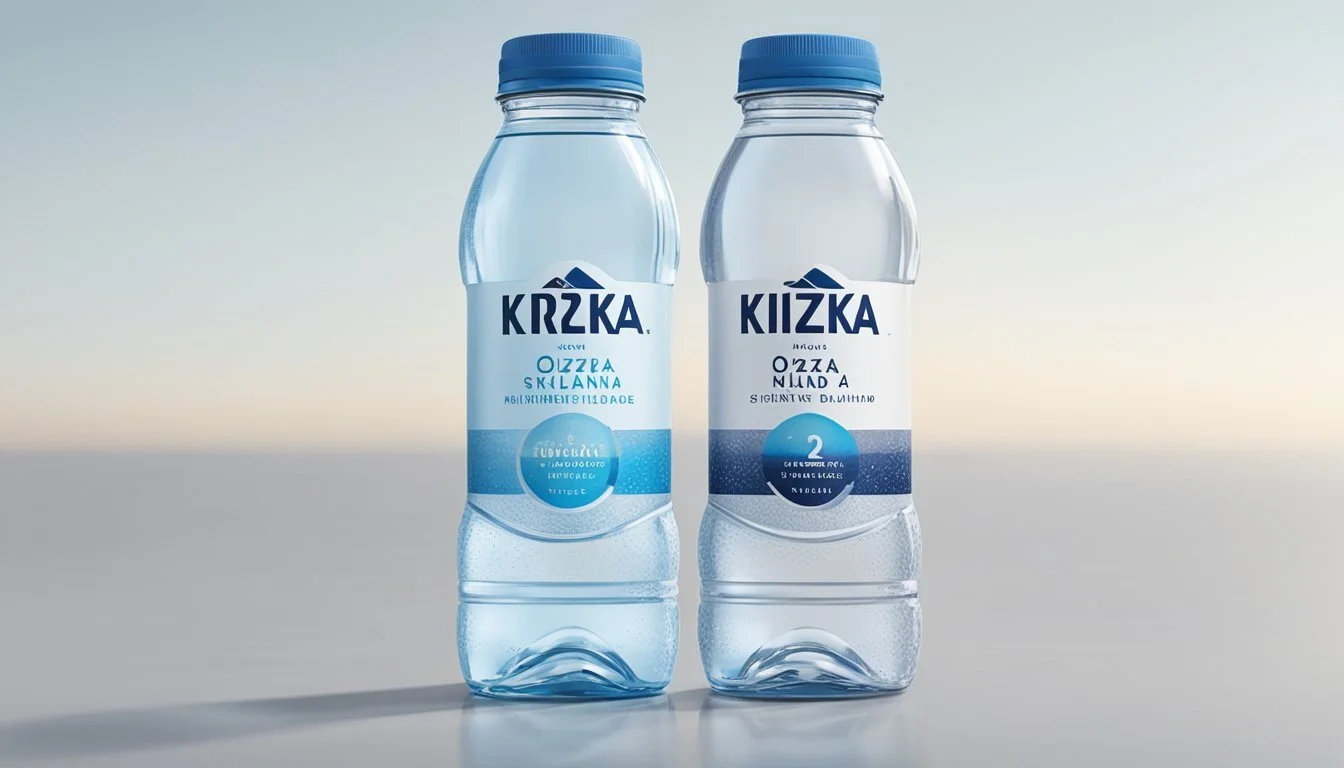Ozarka vs. Kirkland Signature
Comparing Quality and Taste
When it comes to choosing between Ozarka and Kirkland Signature bottled water, many consumers find themselves weighing the pros and cons of each. Ozarka offers a crisp and refreshing taste sourced from carefully selected springs, which can appeal to those who prioritize natural mineral content in their water. On the other hand, Kirkland Signature, known for its affordability and consistent quality, provides a reliable hydration option that is widely accessible.
Both brands have their loyal followers and distinct features. Ozarka's reputation for purity and taste makes it a favorite for those who enjoy a more natural flavor profile. Kirkland Signature, offered by Costco, emphasizes value and widespread availability, making it a practical choice for families and bulk buyers. Determining the better option depends on individual preferences and priorities, whether it's taste, cost, or source.
Understanding Bottled Water
Bottled water is a widely consumed beverage in many regions, offering various benefits and types. Consumers often seek clarity on the different options available, their safety, and the regulations in place to ensure quality.
Definition and Importance of Bottled Water
Bottled water is water packaged in plastic or glass bottles for consumption. This water can come from multiple sources, including springs, wells, and municipal supplies. The convenience and portability make it a popular choice for hydration.
Health is a significant factor driving bottled water consumption. It provides a reliable source of clean water, especially in areas with dubious tap water quality. Additionally, many consumers prefer its taste and the assurance of purity that brands offer.
Different Types of Bottled Water
There are several types of bottled water, each distinguished by its source and treatment process.
Spring Water: Derived from natural springs, it must be collected at the spring or through a borehole tapping the underground formation.
Purified Water: Undergoes processes like distillation, deionization, or reverse osmosis to remove impurities.
Mineral Water: Contains naturally occurring minerals and must have at least 250 parts per million total dissolved solids.
Sparkling Water: Carbonated naturally or artificially to add effervescence.
Understanding these types helps consumers make informed choices based on their health needs and preferences.
Regulatory Bodies and Safety Standards
Safety standards and regulations are critical in the bottled water industry. In the US, bottled water is regulated by the FDA under the Federal Food, Drug, and Cosmetic Act.
The EPA regulates tap water, ensuring it meets safety standards for public consumption. Bottled water manufacturers must follow strict FDA regulations, testing for contaminants and ensuring proper labeling.
Additionally, the International Bottled Water Association (IBWA) provides further guidelines, promoting safety, quality, and transparency. These regulatory bodies ensure that bottled water brands deliver safe, high-quality products to consumers.
Profile: Ozarka and Kirkland Signature Waters
Ozarka and Kirkland Signature are two popular bottled water brands in the United States, each with unique features and origins that appeal to different consumers. Here is a closer look at both brands, focusing on their backgrounds and water sources.
Ozarka: Brand Overview and Origin
Ozarka is a well-known brand in the bottled water market, particularly recognized in the southern United States. It sources its water from natural springs located in the state of Texas.
They emphasize the natural purity of their water, marketing it as originating from three different springs. This regional approach ensures a consistent supply, maintaining the brand's commitment to quality.
Ozarka has built a loyal customer base by focusing on the natural spring aspect, which many consumers find appealing. The water is often characterized as having a clean, refreshing taste, attributed to its mineral composition from spring sources.
Kirkland Signature: Brand Overview and Source
Kirkland Signature, the private label of Costco, offers a bottled water product that is widely available across the United States. Unlike Ozarka, Kirkland Signature sources water from various locations, often municipal supplies that are then purified through advanced filtration processes.
This purified water often appeals to consumers looking for a consistent taste and purity. Costco's extensive distribution network makes Kirkland Signature a convenient choice for many.
The brand focuses on value, providing high-quality water at a lower price point compared to many competitors. This strategy has helped Kirkland Signature become a popular choice among price-conscious consumers seeking reliable bottled water.
Water Quality and Composition
Water quality and composition are critical factors when comparing bottled water brands like Ozarka and Kirkland Signature. Factors such as pH levels, mineral content, purity, and the presence of contaminants can significantly influence consumer choice.
pH Levels and Mineral Content
Both Ozarka and Kirkland Signature have distinct pH levels and mineral compositions. Ozarka sources its water from springs in Texas, naturally providing a pH level around 7.0 to 7.5, which is neutral to slightly alkaline. Its mineral content includes calcium, magnesium, and sodium.
Kirkland Signature, through its reverse osmosis process, aims for a balanced pH level close to 7.0. This process reduces most dissolved minerals, resulting in lower levels of calcium and magnesium compared to Ozarka. Consumers interested in mineral-rich water might prefer Ozarka, while those seeking a balanced pH might opt for Kirkland Signature.
Purity, Filtration Methods, and Health Considerations
The purity of bottled water often depends on the filtration methods used. Ozarka water is primarily spring-sourced and undergoes filtration to remove impurities while retaining natural minerals. This method ensures a clean yet mineral-rich water profile.
Kirkland Signature employs reverse osmosis, a robust purification method known for removing contaminants and heavy metals. This process significantly enhances the water's purity but also strips away beneficial minerals. Both brands ensure high purity levels, but Kirkland Signature’s filtration method may appeal to those concerned about contaminants and heavy metals.
Presence of Contaminants and Heavy Metals
Monitoring the presence of contaminants like arsenic, lead, and PFAS chemicals is crucial for bottled water safety. Ozarka adheres to stringent safety regulations, testing for various contaminants to ensure consumer health. Reports suggest low to negligible levels of heavy metals like arsenic and lead in their water.
Kirkland Signature, benefiting from reverse osmosis, effectively removes most contaminants. This process is highly effective in eliminating potentially harmful substances, including PFAS chemicals and mercury. Both brands maintain high safety standards, but the comprehensive filtration by Kirkland Signature may offer additional peace of mind.
In comparing these brands, it’s clear that both prioritize water quality and safety, with distinct approaches catering to different consumer needs.
Taste Profile and Consumer Preferences
Details about the flavor, mouthfeel, pH level, and marketing strategies play crucial roles in shaping consumer opinions of Ozarka and Kirkland Signature bottled waters.
Flavor Characteristics and Mouthfeel
Ozarka:
Known for a crisp and refreshing taste.
Originates from natural springs in Texas.
Slightly sweet aftertaste, appealing to many consumers.
Kirkland Signature:
Purified water with a clean, neutral flavor.
Hints of a saccharine taste might be noticeable.
The mouthfeel is smooth but can lack the distinctiveness some prefer.
Impact of pH and Minerals on Taste
Ozarka:
Contains natural minerals from its spring sources.
pH level typically around 7.0 – 7.8.
This balanced pH helps enhance the water's refreshing appeal without bitterness.
Kirkland Signature:
Purified through reverse osmosis, adding essential minerals for taste.
Its pH level ranges from 6.5 – 7.5.
The added minerals aim to mimic a natural taste, offering a subtle hint of flavor many consumers find appealing.
Branding and Marketing Influence
Ozarka:
Emphasizes regional loyalty with its Texas roots.
Marketed as a natural and wholesome choice.
Appeals strongly to consumers seeking authentic, local products.
Kirkland Signature:
Under Costco's private label, known for value and quality.
Branding focuses on affordability without compromising taste.
Trusted by many due to Costco's reputation for rigorous quality standards, attracting cost-conscious shoppers.
Both brands offer distinct tastes and marketing approaches, catering to varied consumer preferences.
Environmental and Ethical Considerations
Ozarka and Kirkland Signature bottled waters have distinct approaches to environmental sustainability and ethical sourcing, catering to consumers' growing concerns about their impact on the planet and communities.
Eco-Friendliness and Sustainability Practices
Ozarka sources its water from natural springs in Texas, emphasizing minimal processing. They have initiatives aimed at reducing plastic waste, such as using recyclable PET plastic and encouraging consumers to recycle. Public documents indicate efforts towards decreasing carbon emissions throughout their supply chain.
Kirkland Signature, a Costco brand, offers both spring and purified water. Costco promotes recycling and has been making strides in using recycled plastic (rPET) in their bottles. By minimizing packaging and transportation impacts, they aim to lessen their environmental footprint. The company’s water efficiency practices also highlight their commitment to sustainable groundwater management.
Ethical Considerations in Water Sourcing
Ozarka focuses on ethical spring water sourcing, ensuring that local ecosystems and communities are not adversely affected. They work with local authorities to monitor water extraction levels and ensure sustainable groundwater practices are in place. Transparency in sourcing helps garner consumer trust.
Kirkland Signature relies on various sources, including natural springs and municipal supplies. Ethical considerations include responsibly managing the water withdrawal process to avoid overextraction. Sustainability reports indicate ongoing monitoring and partnerships with environmental organizations to promote water conservation practices. Costco's wide market reach implies a significant responsibility towards ethical sourcing and environmental stewardship.
Consumer Convenience and Accessibility
Both Ozarka and Kirkland Signature bottled waters are created with the consumer in mind, focusing on easy access and user-friendly packaging. Each brand has strengths in different areas of convenience and distribution.
Packaging and Convenience Factors
Ozarka offers a range of bottle sizes, from small personal bottles to large multi-gallon options, catering to various needs. The bottles are made from lightweight plastic, making them easy to carry. Ozarka also incorporates ergonomic designs that help users hold the bottles comfortably.
Kirkland Signature provides similar versatility with a variety of sizes as well. They include user-friendly features like a firm cap that ensures tight sealing, preventing leaks. Many consumers find Kirkland's packaging to be highly practical for both personal use and bulk purchasing.
Availability and Distribution
In terms of distribution, Ozarka is widely available throughout the United States, particularly in the southern and central regions. It is commonly found in grocery stores, convenience stores, and online retailers. This wide availability makes it a convenient choice for many consumers.
Kirkland Signature, on the other hand, benefits from being associated with Costco. It is primarily available in Costco warehouses, making it easily accessible to members. While this limits its availability to some extent, it assures consumers of consistent quality and bulk purchasing options.
Comparative Analysis
Ozarka and Kirkland Signature are two popular bottled water brands with distinct qualities. This section provides a focused comparison on key aspects such as source, taste, and pricing, along with how they stack up against their competitors in the market.
Direct Comparison: Ozarka vs. Kirkland Signature
Source and Quality:
Ozarka sources its water locally from Texas springs, promoting regional authenticity. Kirkland Signature, primarily available at Costco, often sources its water from various regional suppliers, ensuring uniform quality but not always from natural springs.
Taste:
Consumers report that Ozarka has a clean, crisp taste attributed to its spring origins. Kirkland Signature receives mixed reviews; some find it neutral and agreeable, while others detect a slight aftertaste.
Pricing:
Ozarka can be more expensive depending on the region. Kirkland Signature is available in bulk at a lower cost per bottle, making it a budget-friendly choice.
External Competition and Market Position
Brand Recognition:
Ozarka enjoys strong regional loyalty in Texas and nearby areas due to its local sourcing. Kirkland Signature benefits from Costco's extensive distribution network, ensuring wide reach and availability.
Market Position:
Ozarka is perceived as a premium regional brand due to its spring water status. Kirkland Signature markets itself on affordability and bulk availability, appealing to cost-conscious consumers.
Competitors:
Both brands face competition from major names like Nestlé Pure Life, Evian, and Aquafina. Ozarka’s regional strength and Kirkland’s cost advantages are their key differentiators in the crowded market.
Ozarka and Kirkland Signature each have unique selling points, making them suitable for different consumer needs based on taste, price, and regional preferences.
More About Ozarka
Mountain Valley Spring Water vs Ozarka: Which Bottled Water is Better?
Ozarka vs Richard's Rainwater: Which Bottled Water is Better?
Ozarka vs Whole Foods Italian Still Mineral water: Which Bottled Water is Better?
More About Kirkland Signature
1907water vs Kirkland Signature: Which Bottled Water is Better?
7-Select vs Kirkland Signature: Which Bottled Water is Better?
Acqua Pana vs Kirkland Signature: Which Bottled Water is Better?
Alkaline88 vs Kirkland Signature: Which Bottled Water is Better?
Antipodes vs Kirkland Signature: Which Bottled Water is Better?
Aqua Carpatica vs Kirkland Signature: Which Bottled Water is Better?
Aquafina vs Kirkland Signature: Which Bottled Water is Better?
Arrowhead vs Kirkland Signature: Which Bottled Water is Better?
Big Chill vs Kirkland Signature: Which Bottled Water is Better?
Big Win vs Kirkland Signature: Which Bottled Water is Better?
BodyArmor vs Kirkland Signature: Which Bottled Water is Better?
Boxed Water vs Kirkland Signature: Which Bottled Water is Better?
Cascade Mountain vs Kirkland Signature: Which Bottled Water is Better?
Castle Rock vs Kirkland Signature: Which Bottled Water is Better?
Core Hydration vs Kirkland Signature: Which Bottled Water is Better?
Crystal Geyser vs Kirkland Signature: Which Bottled Water is Better?
Deer Park vs Kirkland Signature: Which Bottled Water is Better?
Erewhon vs Kirkland Signature: Which Bottled Water is Better?
Essentia vs Kirkland Signature: Which Bottled Water is Better?
Eternal vs Kirkland Signature: Which Bottled Water is Better?
Hawaii Volcanic vs Kirkland Signature: Which Bottled Water is Better?
Hawaiian Springs vs Kirkland Signature: Which Bottled Water is Better?
Ice Mountain vs Kirkland Signature: Which Bottled Water is Better?
Icelandic Glacial vs Kirkland Signature: Which Bottled Water is Better?
Just Water vs Kirkland Signature: Which Bottled Water is Better?
Kirkland Signature vs Action: Which Bottled Water is Better?
Kirkland Signature vs CBD Living: Which Bottled Water is Better?
Kirkland Signature vs Crystal Lake: Which Bottled Water is Better?
Kirkland Signature vs Dasani: Which Bottled Water is Better?
Kirkland Signature vs Essence pH10: Which Bottled Water is Better?
Kirkland Signature vs HFactor: Which Bottled Water is Better?
Kirkland Signature vs Proud Source: Which Bottled Water is Better?
Kirkland Signature vs Ramona: Which Bottled Water is Better?
Kroger vs Kirkland Signature: Which Bottled Water is Better?
LIFEWTR vs Kirkland Signature: Which Bottled Water is Better?
Liquid Death vs Kirkland Signature: Which Bottled Water is Better?
Mananalu vs Kirkland Signature: Which Bottled Water is Better?
Mountain Valley Spring Water vs Kirkland Signature: Which Bottled Water is Better?
Nestle Pure Life vs Kirkland Signature: Which Bottled Water is Better?
Open Water vs Kirkland Signature: Which Bottled Water is Better?
Ophora vs Kirkland Signature: Which Bottled Water is Better?
Origin vs Kirkland Signature: Which Bottled Water is Better?
Perrier vs Kirkland Signature: Which Bottled Water is Better?
Poland Spring vs Kirkland Signature: Which Bottled Water is Better?
Pure Life vs Kirkland Signature: Which Bottled Water is Better?
Purely Sedona vs Kirkland Signature: Which Bottled Water is Better?
Refreshe vs Kirkland Signature: Which Bottled Water is Better?
Richard's Rainwater vs Kirkland Signature: Which Bottled Water is Better?
San Pellegrino vs Kirkland Signature: Which Bottled Water is Better?
Simple Truth vs Kirkland Signature: Which Bottled Water is Better?
Smartwater vs Kirkland Signature: Which Bottled Water is Better?
Solan de Cabras vs Kirkland Signature: Which Bottled Water is Better?
Starkey vs Kirkland Signature: Which Bottled Water is Better?
Talking Rain AQA vs Kirkland Signature: Which Bottled Water is Better?
The Well vs Kirkland Signature: Which Bottled Water is Better?
Topo Chico vs Kirkland Signature: Which Bottled Water is Better?
Tru Alka vs Kirkland Signature: Which Bottled Water is Better?
Volvic vs Kirkland Signature: Which Bottled Water is Better?
Waiakea vs Kirkland Signature: Which Bottled Water is Better?
Weird Water vs Kirkland Signature: Which Bottled Water is Better?
Whole Foods 365 vs Kirkland Signature: Which Bottled Water is Better?
Whole Foods Italian Still Mineral water vs Kirkland Signature: Which Bottled Water is Better?
Zenwtr vs Kirkland Signature: Which Bottled Water is Better?
Zephyrhills vs Kirkland Signature: Which Bottled Water is Better?






